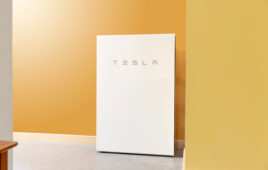In a groundbreaking decision, the California Public Utilities Commission (CPUC) has set forth a mandate that will revolutionize the energy sector. This transformative ruling essentially requires Pacific Gas and Electric Company (PG&E), Southern California Edison (SCE), and San Diego Gas & Electric (SDG&E) to establish residential virtual power plants. With this innovative approach, households across California will not only become active participants in the state’s energy grid but also contribute significantly towards achieving sustainability goals.
A Paradigm Shift Towards Decentralized Energy Generation
This CPUC decision marks a pivotal moment in our quest for sustainable energy solutions. By mandating PG&E, SCE, and SDG&E to establish residential virtual power plants, we witness a paradigm shift from centralized power generation to decentralized systems. Through these virtual power plants, individual homes equipped with solar panels or other renewable energy sources can generate electricity locally and feed any excess back into the grid.
By embracing this distributed model of energy production, Californians are empowered to actively participate in reducing greenhouse gas emissions while simultaneously promoting resilience within their communities. Moreover, this transition fosters greater self-sufficiency by enabling homeowners to rely less on traditional fossil fuel-based grids during peak demand periods or emergencies.
Promoting Grid Flexibility and Reliability
The establishment of residential virtual power plants brings about numerous benefits beyond environmental sustainability. One notable advantage is enhanced grid flexibility and reliability. As more households join this initiative, an interconnected network of decentralized generators emerges – effectively creating a robust system capable of adapting swiftly to fluctuations in demand or supply disruptions.
This newfound flexibility allows utilities like PG&E, SCE, and SDG&E to optimize resource allocation efficiently while minimizing the risk of blackouts or grid failures. By tapping into residential virtual power plants during peak demand periods, utilities can alleviate strain on the grid and ensure a reliable supply of electricity to all consumers.
Empowering Communities and Fostering Energy Equity
The CPUC’s mandate for residential virtual power plants not only transforms our energy landscape but also empowers communities across California. This initiative has the potential to bridge existing disparities in access to clean energy resources, particularly among low-income households. Through various incentive programs and partnerships with community organizations, residents who may have previously faced barriers in adopting renewable technologies can now actively participate in this sustainable revolution.
By democratizing access to clean energy solutions, we pave the way for a more equitable future where every Californian can contribute towards building a greener tomorrow. The establishment of residential virtual power plants serves as an important step towards achieving energy equity by ensuring that no one is left behind in our collective efforts to combat climate change.
A Bold Step Towards Sustainable Future
In conclusion, the CPUC’s decision mandating PG&E, SCE, and SDG&E to establish residential virtual power plants represents a bold step towards transforming our energy landscape. This groundbreaking ruling not only promotes environmental sustainability but also enhances grid flexibility while empowering communities across California. As we embark on this journey towards decentralized generation and greater energy equity, it is imperative that stakeholders collaborate closely to overcome challenges and seize opportunities presented by this innovative approach. Together, we can build a brighter future powered by resilient communities committed to combating climate change through sustainable practices.
